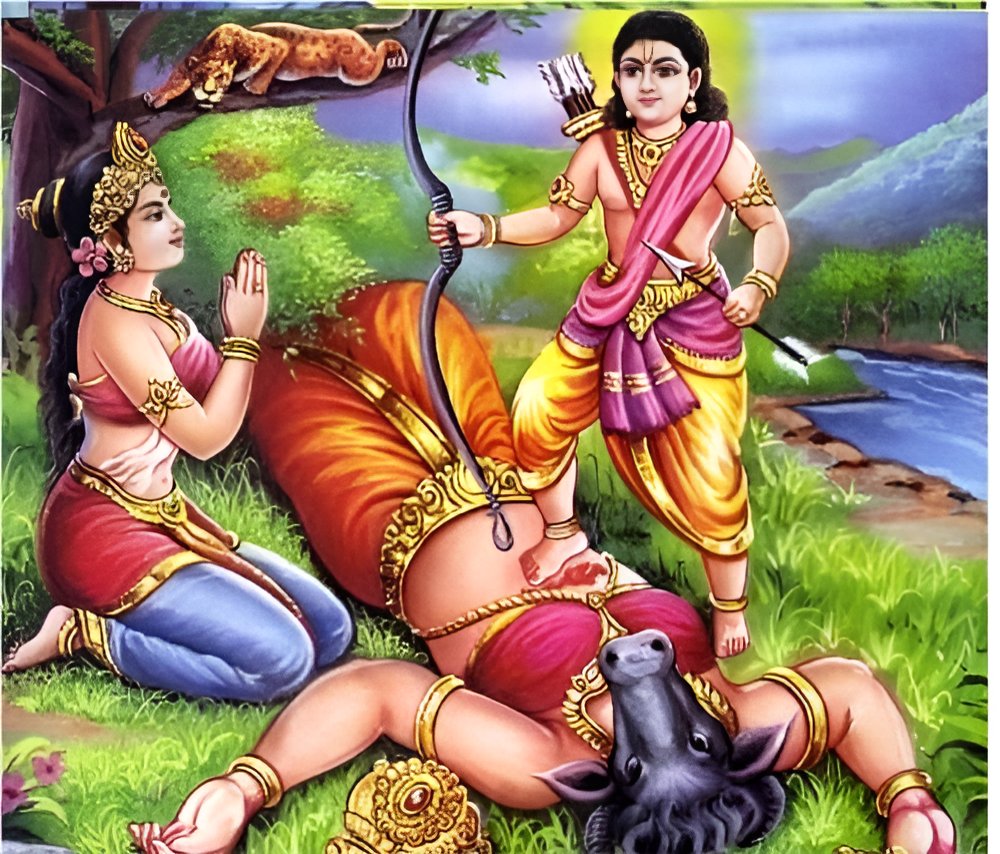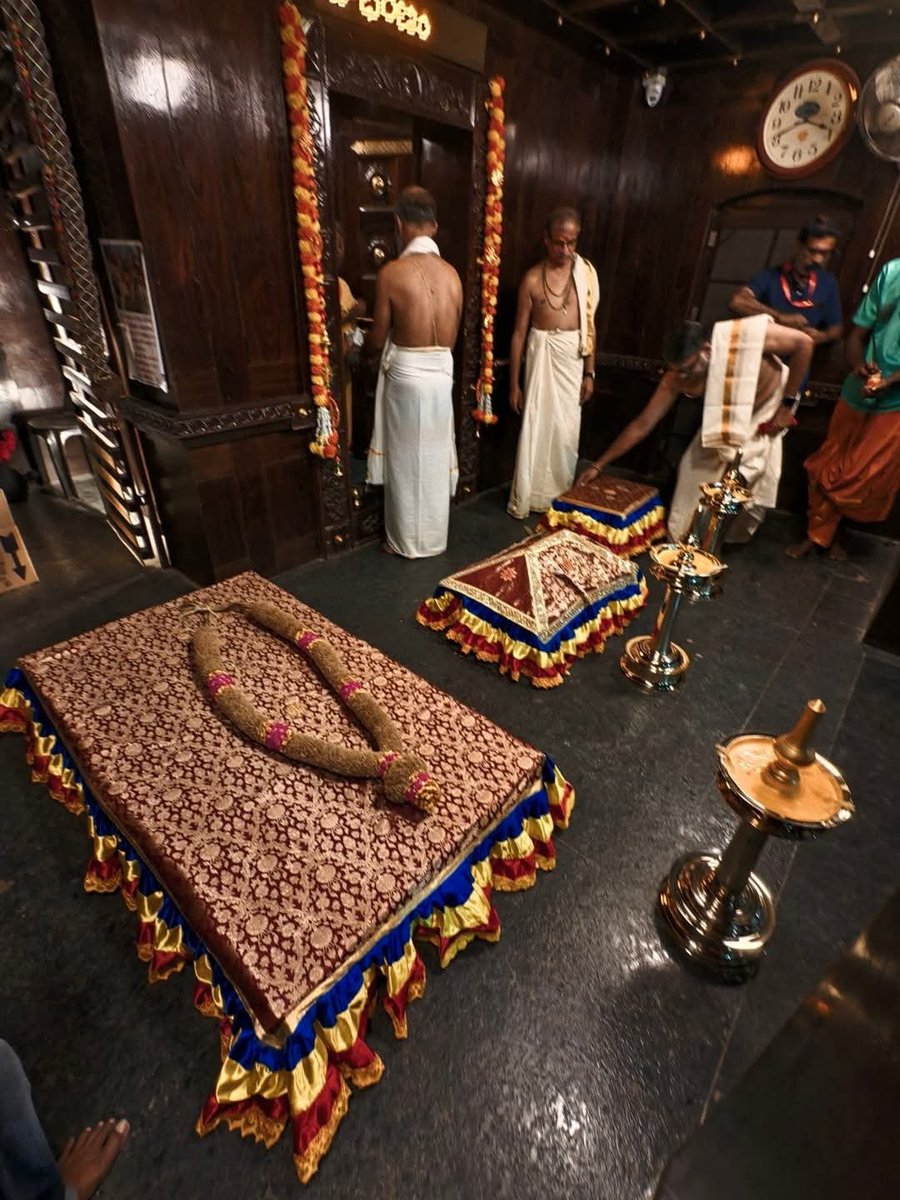Pandalam
PANDALAM

About Pandalam Family
पाण्डलाभुवि जातोऽयं मणिमण्डपवासी शुभः।
आर्यः केरलसंभूतः पूणाम्बलशिखेरगः॥
यः तत्र प्रकाशते नित्यं शबरीनाथ ईश्वरः॥
Pāṇḍalābhuvi jāto'yaṁ maṇimaṇḍapavāsī śubhaḥ।
Āryaḥ keralasaṁbhūtaḥ pūṇāmbalaśikheragaḥ॥
Yaḥ tatra prakāśate nityaṁ śabarīnātha īśvaraḥ॥
Latest Articles »
Pandalam Family - Gallery

The Pandalam Family holds supreme rights over the Thiruvabharanam, in accordance with the wishes of Pandalam Raja Aditya Varma & Marthanda Varma.
The Pandalam family descends from the Pandya dynasty of Madurai, and they established their kingdom in Kerala in 903 AD with the help of the Venad (Travancore) kingdom after migrating due to internal conflicts in Tamil Nadu.
During the 18th century, Marthanda Varma, the ruler of Venad, expanded his territory by annexing surrounding regions and established the powerful Travancore state. As part of this expansion, the Kingdom of Pandalam accepted the suzerainty of Travancore and became a subordinate chiefdom under its rule, while continuing to preserve its religious and cultural traditions, particularly its deep connection with Lord Ayyappa and the Sabarimala temple.
In the late 18th and early 19th centuries, both Travancore and Pandalam faced severe financial challenges. Travancore, having sought military assistance from the British East India Company during the period of Tipu Sultan’s campaigns, became entangled in a cycle of mounting debt. The treaty signed in 1788 marked the beginning of British influence, and by 1805, further revisions to the treaty reduced the kingdom’s autonomy. By 1807, Travancore was struggling with arrears amounting to ₹6,62,669, and under pressure from the British Resident, it was forced to reduce military spending and reorganize its finances. These financial strains contributed to internal unrest and loss of control over key affairs. Eventually, in 1907, Travancore formally accepted British administrative authority, becoming the Travancore Sarkar, a princely state under the British Empire.
Pandalam, too, was drawn into this broader political and financial web. After Tipu Sultan’s campaigns, it was compelled to pay ₹2,20,001 to Travancore as a contribution toward war expenses. This debt was paid in installments, primarily using revenue from the Sabarimala temple. By 1820, a formal agreement was established, under which the Travancore king would provide support to the Pandalam family in return for revenue and administrative control over the region. As a result, Pandalam was fully integrated into the Travancore state. While political power shifted, the Pandalam family continued to maintain ceremonial and spiritual authority—most notably in their role in the Thiruvabharanam procession, which remains a vital part of Sabarimala tradition to this day.


Committee Information
The Pandalam Palace Managing Committee, formed by members of the Pandalam family, oversees the traditions linked to Lord Ayyappa. The palace is considered Ayyappa’s foster home, and the committee plays a key role in the Thiruvabharanam procession to Sabarimala during the Makaravilakku festival, safeguarding its ritual purity and cultural legacy.
Key Responsibilities:
» Coordination of the annual Thiruvabharanam procession to Sabarimala.
» Preservation of sacred ornaments and traditions of Lord Ayyappa.
» Bhagwan Ayyappa related matters
» Played a significant role in the 2019 Sabarimala conflict in efforts to preserve traditional practices.

Committee Members:
- Sri. SANKAR.N - President, Srampikal palace.
- Sri.M.R.SURESH VARMA - Secretary, Ootupura palace
- Sri.P.N.ARUN VARMA - Vice president, puthenkoikal palace
- Sri.RAMESH VARMA - Joint secretary, Lakshmi Vilasom palace
- Sri.DEEPA VARMA.N - Treasurer, puthenkoikal palace
Email: Pandalampalacemanagingcommitte@gmail.com / ppmc1092@gmail.com
The above information as of 24 December 2024 - is sourced from the image referenced.

History

The Pandalam Kingdom was an ancient princely state located in the present-day Pathanamthitta district of Kerala, India. Its origins trace back to the Pandya dynasty of Madurai, who migrated to Kerala around 903 AD to escape conflict and persecution. The family was welcomed by the local rulers of Venad (later Travancore) and granted land to establish their dominion.
Aryan Keralan Varman
Ayyappa – Aryan Keralan Varman - History
Among the most divine and legendary figures to emerge from the Pandalam lineage is Aryan Keralan Varman, revered by millions as Lord Ayyappa.
Ayyappa incarnated into the Pandalam family to uphold Dharma (righteousness) in a time of rising injustice.

At the end of his earthly mission, Ayyappa is believed to have entered Jeeva Samadhi—a conscious meditative state leading to liberation—at the Manimandapam, where he merged with the energy of the sacred hill Poonambalamedu. His divine presence continues to guide and bless pilgrims through the sanctum of Sabarimala.
“When Adharma rises, Ayyappa descends—to restore Dharma, in silence, in strength, and in supreme grace.”
Manikanta - Puranic

Manikanta was born in the ancient Pandya Kingdom as the divine son of Lord Shiva and Lord Vishnu, who had taken the form of Mohini. A bell was tied around the infant’s neck, and thus a sage named him Manikandan—with "Mani" meaning "bell" and "Kandan" meaning "neck" in Tamil. The sage instructed the king to take the child to the palace and raise him as his own.
The Pandalam dynasty is believed to be descended from the older Pandya lineage. Manikanta’s most legendary act was the slaying of the demoness Mahishi, which took place in a much more ancient time, long before the Avatar of Bhagwan Ayyappa. His birth and mission symbolized the union of divine powers and the restoration of dharma.
Thiruvabharanam

Thiruvabharanam refers to the sacred ornaments of Lord Ayyappa, which are preserved by the Pandalam Family and carried in a grand ceremonial procession to the Sabarimala temple every year during the Makaravilakku festival. These ornaments, believed to have been crafted at the command of the Pandalam Raja as a tribute to his divine son Ayyappa, symbolize the deity’s royal divinity and presence. The set includes three sacred caskets—Thiruvabharana Petti, Velli Petti, and Kodi Petti (flag box)—each with ritual importance.

The Thiruvabharanam procession is an annual spiritual event that begins three days before Makaravilakku from the Valiyakoikkal Temple near Pandalam Palace. Covering about 83 kilometers through forests and hills, the sacred journey concludes at the Sabarimala temple. The representative walks barefoot, accompanied by devotees and temple officials, all observing strict discipline and austerity (vratham). On the evening of Makara Sankranti, the ornaments are ceremoniously placed on the idol of Lord Ayyappa, moments before the appearance of the flame—Makara Jyothi—which is lit by devaswom board staff on the sacred hill of Ponnambalamedu.
Detailed Information About Thiruvabharanam Click Here
